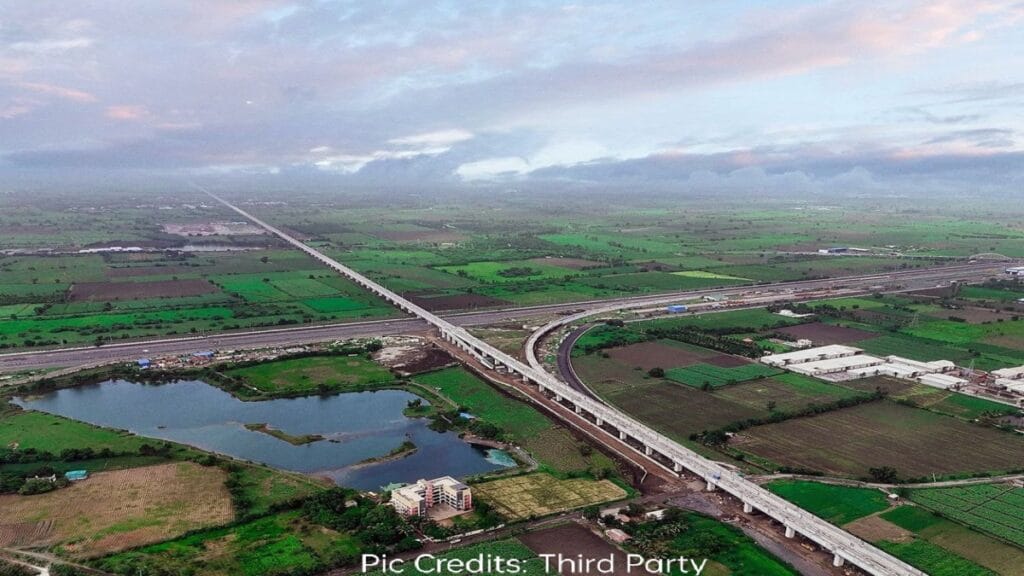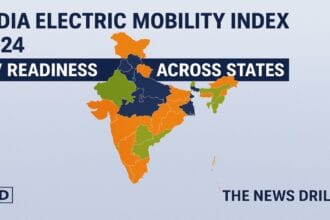
Ahmedabad – In a significant milestone for India’s first high speed rail initiative, the Mumbai-Ahmedabad bullet train project has achieved the completion of 300 kilometers of viaducts. The project, often touted as a symbol of India’s infrastructural advancement, is moving ahead at a fast pace, with authorities utilizing cutting edge techniques such as the Full Span Launching Method (FSLM) to accelerate construction.
With an estimated cost of ₹1.08 lakh crore, this ambitious bullet train corridor is expected to be fully operational by 2029. Once completed, the train will connect 12 major stations across Maharashtra and Gujarat, significantly reducing travel time between Mumbai and Ahmedabad to just over two hours.
Bullet Train Project: A National Dream in Motion
The Mumbai-Ahmedabad bullet train project, also known as the Mumbai-Ahmedabad High Speed Rail (MAHSR) corridor, is a joint venture between the Governments of India and Japan. Funded majorly through a low interest loan from Japan International Cooperation Agency (JICA), the project uses Shinkansen technology, globally renowned for its safety and efficiency.
This bullet train project will span a total length of 508.17 km, cutting across Mumbai, Thane, Valsad, Surat, Vadodara, Anand, and Ahmedabad, among others. With trains expected to run at speeds of up to 320 km/h, the bullet train aims to redefine intercity travel for millions of Indians.
300 km of Viaducts Completed Using Full Span Launching Method
One of the most remarkable achievements so far in the bullet train project is the construction of 300 km of viaducts, which are essential elevated structures allowing trains to pass seamlessly over roads, rivers, and other rail tracks.
To speed up this process, the Full Span Launching Method (FSLM) has been employed. This technique involves precasting entire spans of 30 to 45 meters and launching them directly onto piers, ensuring both speed and structural integrity.
According to the National High Speed Rail Corporation Limited (NHSRCL), the FSLM not only enhances safety and quality but also minimizes construction disruptions. So far, more than 11,000 piers have been constructed, and the project is well ahead in multiple stretches, particularly in Gujarat.
Stations and Alignment: A Modern Rail Network
The bullet train project will feature 12 stations:
- 1. Mumbai
- 2. Thane
- 3. Virar
- 4. Boisar
- 5. Vapi
- 6. Bilimora
- 7. Surat
- 8. Bharuch
- 9. Vadodara
- 10. Anand
- 11. Ahmedabad
- 12. Sabarmati
These stations are being designed to provide seamless multimodal connectivity with existing roadways, metro networks, and bus terminals. The bullet train stations will also be equipped with modern amenities like skywalks, elevators, waiting lounges, retail zones, and baggage handling systems.
Notably, the Sabarmati terminal is being built as a futuristic hub with facilities akin to modern airports. The bullet train project is not just about fast trains it’s about modernizing the very experience of train travel in India.
Economic & Environmental Impact
The Mumbai-Ahmedabad bullet train project is expected to create over 90,000 jobs, both direct and indirect. The supply chain for materials like steel, cement, and machinery has also given a boost to local industries, especially in Gujarat and Maharashtra.
From an environmental standpoint, bullet trains are significantly more energy efficient than conventional rail or road transport. The project is incorporating green technologies like solar panels, rainwater harvesting, and afforestation along the alignment corridor.
In addition, high speed trains emit far less carbon dioxide per passenger kilometer, making this project a vital part of India’s commitment to sustainable development.
Timeline and Current Progress
Project Start: September 2017
Target Completion: August 2026 (revised to 2029)
Current Status:
- 300 km of viaducts completed
- Over 60% of civil work in Gujarat completed
- Multiple stations under construction
- Land acquisition: 99.75% in Gujarat, 93.79% in Maharashtra
While initial delays due to land acquisition and environmental clearances caused setbacks, recent months have seen accelerated construction, especially after coordination between state and central agencies improved.
Symbol of India’s Aspirational Infrastructure
The Mumbai-Ahmedabad bullet train project stands as a shining example of India’s vision to develop world class infrastructure. More than just a transportation initiative, it represents India’s ambition to integrate cutting edge technology, sustainable practices, and economic growth into one cohesive development strategy.
With its viaducts progressing rapidly and completion targeted by 2028, the bullet train project promises to not only revolutionize Indian railways but also bring India into the league of nations with advanced high speed rail systems.
Stay Connected with The News Drill for more updates on India’s infrastructure growth, high speed railways, and mega projects.
Contact us: contact@thenewsdrill.com
Submit a tip or story: editor@thenewsdrill.com













